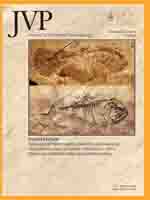A broad phylogenetic analysis of extant and fossil fishes led previous authors to conclude that the occipital region of primitive actinopterygians was formed by the fusion of three segments. They included the dipnoan Griphognathus whitei from the Devonian of Western Australia in their study and assumed that all sarcopterygians also had the occipital ring made of three segments. In reaching this conclusion, they interpreted the foramina in the walls of the occipital rings in that species as carrying the spino-occipital nerves, and the furrows in the wall as being for myocommata. We now have access to three small juveniles of this species with the occipital rings isolated from the cranium, and three other young adults smaller than those described previously. There is no evidence of three occipital segments in any of these specimens. The isolated occipital rings have been examined by serial tomography and they have a single spino-occipital nerve that divides into dorsal and ventral branches. The attachment of the occipital segment to the cranium is described for the first time. The structure of the hyomandibula is described from a growth series, and its pattern is different from that of other sarcopterygians. The assumption that the occipital region in dipnoans is representative for all sarcopterygian fishes is shown to be incorrect.
How to translate text using browser tools
1 July 2012
Development of the Posterior Endocranium of the Devonian Dipnoan Griphognathus whitei
K. S. W. Campbell,
R. E. Barwick,
T. J. Senden
ACCESS THE FULL ARTICLE

Journal of Vertebrate Paleontology
Vol. 32 • No. 4
July 2012
Vol. 32 • No. 4
July 2012




